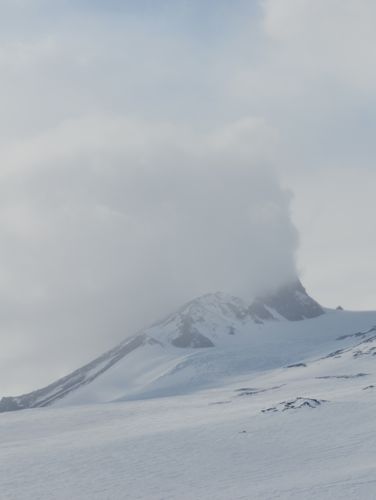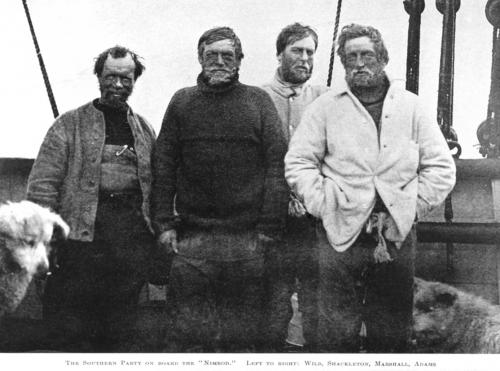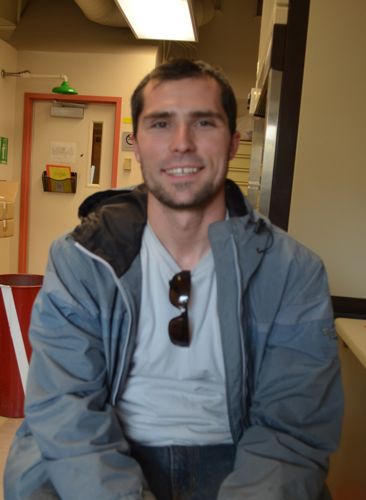Going to Cape Royds
Our research team has been trying to get to Cape Royds to collect control samples, however poor weather has kept us from leaving. Hopefully we will make it there tomorrow!
Historic Antarctic Expeditions
I am eager to get to Cape Royds because it is the location of Ernest Shackleton's hut. In 1901 Shackleton accompanied Robert Scott in his Discovery Expedition to Antarctica. Unfortunately, Shackleton became ill and had to return home before reaching the South Pole. Shackleton returned to Antarctica seven years later in his own ship, the Nimrod. His team climbed Mt. Erebus and trekked closer to the South Pole than Scott's group. Shackleton and his team were only 97 miles from the South Pole when he realized his team did not have enough provisions to survive and turned back. Shackleton wrote to his wife, Emily, "I thought, dear, that you would rather have a live donkey than a dead lion."

A Norwegian explorer, Roald Amundson, was the first one to reach the South Pole on December 14, 1911. To celebrate the 100th year anniversary of this achievement, the prime minister and other dignitaries of Norway will be heading to the South Pole next week. Amundson's arrival to the pole was shortly followed by Scott, who died on the journey back to his refuge at the coast.

In 1914, Shackleton attempted another expedition to Antarctica in his ship, the Endurance. The ship became trapped in the ice and sunk. Shackleton's team escaped to the floating ice, eventually taking small boats to an island. Shackleton, along with six of his crew members, crossed 1,300 km of ocean in 16 days and reached whalers who were able to rescue the rest of the crew. No one died despite the incredible circumstances. Shackleton's ability to keep his men alive and in good spirits is widely recognized. Apsley Cherry-Garrard, who chronicled Scott's failed trip to the pole, wrote the following about Antarctic explorers in his book, Worst Journey in the World:
For a joint scientific and geographical piece of organization, give me Scott; for a Winter Journey, Wilson; for a dash to the Pole and nothing else, Amundsen: and if I am in the devil of a hole and want to get out of it, give me Shackleton every time. They will all go down in polar history as leaders, these men.

Shackleton's Hut at Cape Royds
Scott and his crew had already established a camp at Cape Royds in 1904. Shackleton built his hut on the bare black rocks of Cape Royds in February of 1908, during the Nimrod expedition. The hut was insulated and used as a base for scientific expeditions and explorations, including the ascension to Mount Erebus in March of 1908 and reaching the south magnetic pole in January of 1909. The hut at Cape Royds was the home base for 14 months during the Nimrod expedition. The hut is made from fir timber, and like Discovery Hut, it was prefabricated.
Comparison and Reflection
I often compare my adventures here to those of Scott, Amundson and Shackleton. Rather than treacherous months out at sea, I landed on a C-17 cargo jet after 5 hours of flying. Instead of surviving in a hut that I had to first construct, I sleep in a warm (sometimes too warm!) dorm. Instead of resorting to seal meat, penguin meat, or killing my sled dogs for meat, I eat fruit, vegetables, pasta, and many other foods prepared for me in the dining hall. And yet, when I'm looking out from Ob Hill or Hut Point, I catch a glimpse of the world past explorers looked upon. Antarctica is a harsh continent and the possibility of death or at least frostbite, is lurking behind every ill-planned adventure.
Questions
What feelings and thoughts do you think went through Shackleton's mind when he was 97 miles from the South Pole and had to turn around to keep his crew alive. Would you have done the same thing? Why or why not?
How does your life compare to a life in Antarctica?
Math Connection
Shackleton and his crew covered 1,300 km of ocean in 16 days. What was their average speed? If there are 1.62 km in 1 mile, how many miles did they travel? What was their speed in miles per day? Miles per hour?
Cool Careers in Antarctica

Meet Jerod Knox. Jerod is a vehicle operator (shuttle driver) at McMurdo Station. He has been interested in polar history for many years and coming to Antarctica has been a dream for him. He has read many books about Antarctic explorers, including "Endurance", a book about Shackleton's adventures. One of his most memorable experiences here so far is getting to see the Pegasus crash site and being out at the edge of the station. The Pegasus crash site is located just outside of McMurdo Station, where a U.S. Navy plane crashed, but luckily there were no casualties. Jerod works in construction back in Northern California and his passion is off-roading. Here in Antarctica, he gets to drive vans over difficult terrain, which is very similar to his hobby back home! His advice to students is to not be afraid to let go of the rope. He says: "you don't regret the things you do, you regret the things you don't do."

Comments